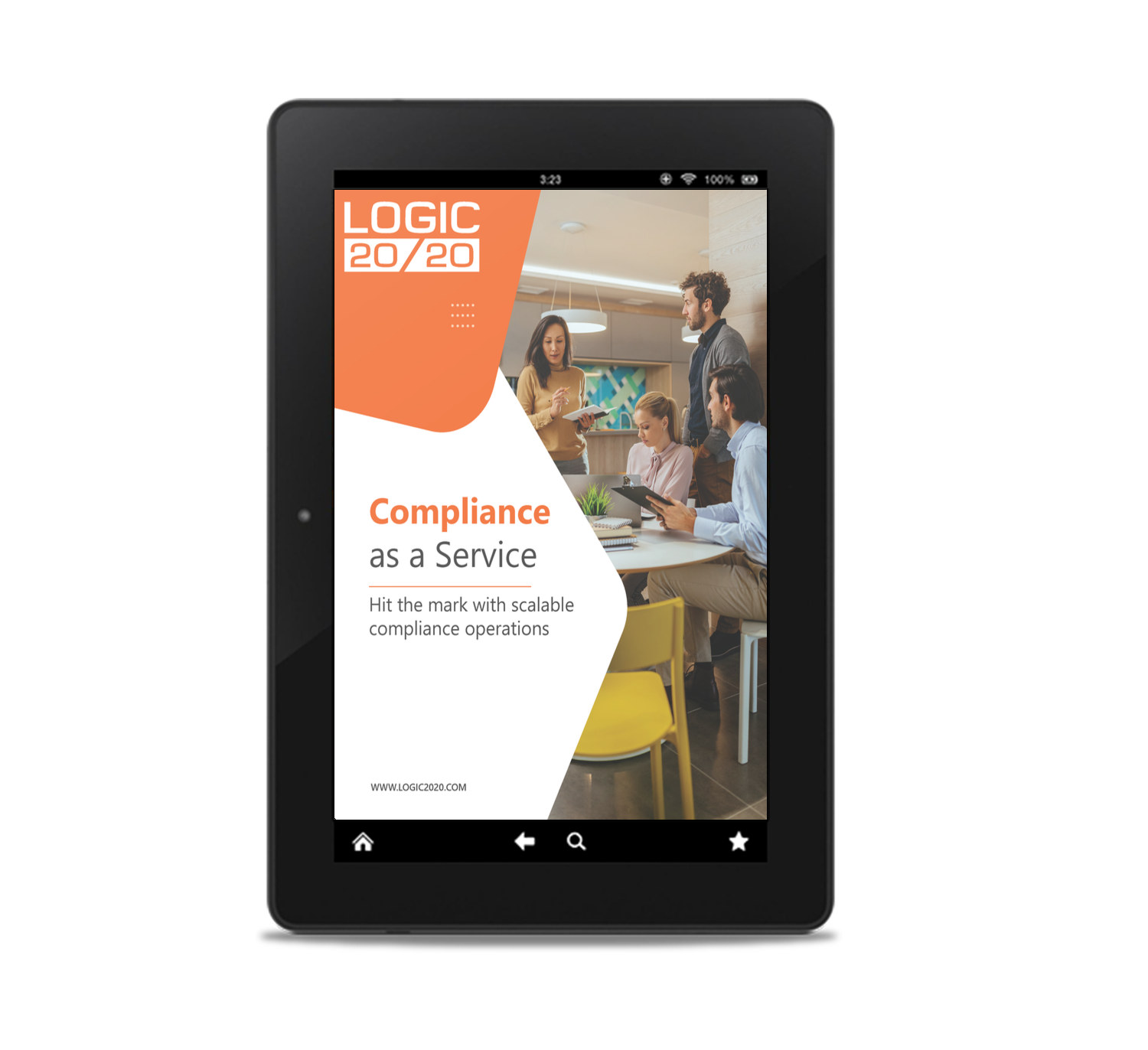6-minute read
Quick summary: Compliance automation can streamline processes, reduce risk, and improve accuracy—when it’s implemented with a strategic, data-centric approach.
Regulatory frameworks are becoming more complex, and many organizations are struggling to keep up with the pace of change. Given the near-constant flow of new regulations and updates, coupled with evolving business processes such as integrating artificial intelligence, tackling new compliance challenges is becoming a daily fact of business life. Ensuring data protection in the context of regulatory compliance—e.g. in aligning with regulations such as GDPR—is crucial for safeguarding personal data and privacy.
Yet, despite the high stakes, only 8 percent of risk and compliance professionals feel “extremely confident” in their organizations’ ability to manage these concerns. And an astounding 28 percent of organizations still rely on paper-based methods to track compliance data.
Compliance automation enables businesses to manage their regulatory obligations efficiently while reducing costs and lowering the risk of human error. In a recent Thomson Reuters survey, 65 percent of respondents agreed that automating manual processes would help reduce the cost and complexity of their compliance operations.
However, simply automating tasks is not enough. Implementing effective compliance automation requires a strategic approach that aligns data, processes, and technology to achieve the desired results.
Article continues below.

Compliance as a Service (CaaS) ebook
Get expert insights on how to hit the mark with scalable compliance operations.
We will never sell your data. View our privacy policy here.
Why compliance automation?
Organizations operate in an increasingly complex regulatory environment. Expanding data ecosystems, evolving regulations, and growing reliance on third-party vendors all contribute to compliance challenges. Without the right tools, maintaining visibility, enforcing policies, and mitigating risk become difficult. Compliance automation helps organizations address these challenges by improving oversight, streamlining compliance management processes, and reducing manual effort through the use of automation software and robust compliance frameworks.
Technology adoption rates outpacing oversight
The challenge
The rapid adoption of new technologies has led to a fragmented compliance landscape where overlapping tools and disconnected systems create inconsistencies and blind spots. Without sufficient governance, organizations struggle to assess risks and ensure compliance across the enterprise.
How automation offers a solution
Continuous use of automated compliance tools centralizes compliance data, enables real-time monitoring, and improves visibility across systems, making it easier to track compliance status and enforce policies. Additionally, compliance automation solutions utilize technical system integrations, AI, machine learning, and data analytics to execute predefined actions, automating compliance tasks related to various regulations and standards.
Gaps in understanding data movement and transformation
The challenge
Data moves across multiple systems, undergoing transformations that may not be well-documented or fully understood. Without visibility into these processes, organizations risk compliance failures and data integrity issues.
How automation offers a solution
Teams can manage compliance workflows using automation tools that provide real-time tracking, audit trails, and data lineage mapping, helping compliance teams understand how data is collected, processed, and stored and ensuring it meets regulatory requirements. These tools also facilitate risk assessments, helping organizations identify vulnerabilities, evaluate compliance gaps, and ensure adherence to industry regulations.
Increased risk when sharing sensitive data
The challenge
Many organizations share personally identifiable information (PII) with third parties but lack sufficient controls to prevent unauthorized access or misuse. This exposes the business to compliance violations and security breaches.
How automation offers a solution
Automated compliance solutions apply standardized access controls, encryption, and monitoring, ensuring that PII is shared securely and in compliance with applicable regulations.
Keeping up with changing regulations
The challenge
Compliance teams must navigate an evolving regulatory landscape where compliance regulations differ across jurisdictions and change frequently. Relying on manual processes to track and implement updates is inefficient and prone to errors.
How automation offers a solution
Automation streamlines processes to ensure continuous compliance by integrating regulatory updates, enabling rule-based compliance checks, and simplifying reporting—helping organizations stay ahead of changing requirements.
Shifting compliance from reactive to strategic
The challenge
Many compliance functions are stuck in a reactive cycle, focused on issue resolution rather than proactively identifying risks and guiding business decisions.
How automation offers a solution
With real-time insights, predictive analytics, and centralized reporting, automation enables compliance teams to move from a reactive stance to a more strategic, advisory role within the organization.
By addressing these persistent challenges, compliance automation helps organizations strengthen risk management, enhance operational efficiency, and build a more proactive compliance function. A robust compliance automation solution can streamline a broad range of compliance-related tasks, enhancing monitoring and supporting decision-making across multiple systems.
By addressing persistent challenges—such as an increasingly complex regulatory environment, expanding data ecosystems, and growing reliance on third-party vendors—compliance automation helps organizations strengthen risk management, enhance operational efficiency, and build a more proactive compliance function.
Case studies: Automating compliance in a global gaming company
In two separate initiatives, a global gaming company partnered with Logic20/20 to streamline compliance processes and improve efficiency using low-code automation tools and AI-driven solutions.
Custom Power App for compliance data intake
The company needed a more structured, reliable way to collect compliance-related data as part of its review and approval process. Previously, the intake process relied heavily on one-off presentation decks, undocumented meetings, and informal verbal approvals, leading to inconsistencies, lost information, and compliance risks. Key details were scattered across individual hard drives, personal cloud drives, and email threads, making it difficult to track approvals and to respond quickly to requests.
We developed a custom Power Apps form that standardizes data collection, making the intake process more comprehensive and structured from the start. The new procedure:
- Ensures consistency by defining required fields and standardizing the information collected for any process that requires a privacy review.
- Supports review and approval workflows by capturing all necessary data upfront, reducing delays and the need for back-and-forth clarifications.
- Feeds into a central database, accelerating responses to compliance requests and ensuring accessibility of historical data.
- Provides a foundation for other processes, allowing teams to build additional workflows on top of the standardized data intake.
By replacing the previous ad hoc approach with an automated, structured solution, the organization improved efficiency, reduced compliance risks, and established a reliable system for audit readiness by tracking approvals and ensuring regulatory adherence. Specific results include
- 20 percent time savings on processing compliance requests
- Rapid customization and implementation due to user-friendly low-code platform
AI-powered chatbot for compliance support
The client also faced challenges in disseminating compliance-related information to its product and engineering teams, which created bottlenecks for the compliance department. To address this issue, we developed an AI chatbot using a retrieval-augmented generation (RAG) model, which enables users to quickly find answers to compliance questions. The chatbot integrates with curated knowledge articles and compliance documentation, ensuring that employees have quick access to reliable, up-to-date information.
The AI-driven solution reduces the time the compliance team spends answering routine questions, allowing them to focus on more complex issues. Additionally, it improves compliance readiness by enabling teams to self-serve and prepare more thoroughly for compliance reviews.
Setting the stage for successful compliance automation
Ensure a solid data foundation
The success of compliance automation hinges on having a strong data foundation to support the compliance process. To ensure smooth processes and reliable outcomes, all data must be clean, current, properly formatted, and secure. Outdated or inaccurate data can lead to compliance errors and increase the risk of violations.
Data governance supports this foundation by ensuring that data remains well-managed, accessible, and reliable across the organization. If the organization doesn’t yet have a full-fledged governance framework in place, then these gaps should be considered when exploring compliance automation.
Select the right processes to automate
As not all compliance processes are equally suited for automation, it’s important to be strategic in choosing which ones to automate. Some tasks may see significant improvements in efficiency and accuracy, while others may not benefit as much—or could even introduce unnecessary complexity.
When evaluating which processes to automate, consider factors such as cost, value, and risk. Start by identifying tasks that are the most time-consuming, repetitive, and prone to human error. These processes often offer the greatest potential ROI when automated.
However, keep in mind that certain tasks may be better left manual, especially if they require human judgment, decision-making, or unique contextual insights. Striking the right balance between automation and manual oversight will ensure that compliance programs remain flexible and effective.
Tasks that are the most time-consuming, repetitive, and prone to human error often offer the greatest potential ROI when automated. Automating and documenting key compliance activities can facilitate smoother audits and assist in quickly identifying loopholes when compliance issues arise.
Choose the right compliance automation tools
Selecting the right tools for compliance automation and evidence collection is as important as deciding which processes to automate. Rather than jumping straight to high-cost, advanced technologies, it can be more effective to start with low-code or low-tech options. These solutions can offer the flexibility and scalability needed to address your immediate needs without requiring a significant upfront investment.
In the right applications, low-code platforms allow teams to build and customize automation solutions with minimal programming expertise, enabling faster implementation and easier maintenance. These tools can be ideal for automating routine tasks or creating simple workflows that streamline compliance efforts. In some cases, a basic automation tool may be enough to deliver the desired improvements in efficiency and accuracy, without the need for complex, expensive technology. Compliance automation software can further enhance these efforts by providing real-time monitoring, alerts, and reducing manual effort, ensuring adherence to industry standards. (See the case study “Custom Power App for compliance data intake” above.)
Develop a roadmap for strategic automation
Rather than automating all processes at once, organizations benefit from a phased approach that minimizes disruptions and ensures smooth adoption.
1. Start with a pilot program
Begin by testing the compliance automation strategy on a smaller scale. A pilot phase allows the organization to assess performance, identify challenges, and make adjustments before investing in a full rollout.
2. Proceed with phased deployment
Gradually roll out automation to different parts of the organization. This approach enables teams to monitor progress while ensuring they can adapt to the new processes smoothly.
3. Gather feedback and refine processes
Continuous feedback from users is essential for identifying opportunities for improvement. Adjust automation processes as needed to ensure they continue to align with the needs of users and of the business.
4. Gradually scale deployment
Once processes have been refined and deployment is successful, scale the automation efforts. Incremental scaling allows for smooth adoption and integration into existing workflows.
Measure the effectiveness of compliance automation
By conducting risk assessments and tracking key performance indicators (KPIs), organizations can gain valuable insights into the effectiveness of their automated compliance processes and identify areas for improvement. Essential KPIs to monitor include:
Time savings
One of the primary benefits of compliance automation is the reduction of time spent on manual tasks. Tracking time savings will demonstrate how efficiently automated systems are streamlining processes.
Cost savings
Compliance automation should lower operational costs by reducing manual labor and improving process efficiency. Monitoring cost savings helps quantify the ROI.
Accuracy rates
Automation improves accuracy by minimizing human error, especially in repetitive tasks. A higher accuracy rate indicates that the compliance automation system is functioning effectively and reducing the risk of errors that could lead to violations.
Violation rates
A successful compliance automation program should reduce the number of compliance violations by ensuring regulations are consistently met in a timely manner. Reductions in violation rates reflect how well automated processes are maintaining compliance standards.
Implementing feedback loops is also vital for supporting continuous improvement. Regularly collecting feedback from users and reviewing system performance ensures that compliance automation processes can be refined and optimized over time, adapting to changing regulations and business needs.
Avoid common challenges in compliance automation
While compliance automation offers significant benefits, it’s important to recognize and address common challenges that can arise during implementation. Ignoring these pitfalls can lead to inefficiencies, poor adoption, or even new compliance risks. Organizations must consider the General Data Protection Regulation (GDPR) as a critical aspect of regulatory compliance, alongside other industry-specific regulations like HIPAA and PCI DSS.
Over-automating processes
Automating processes that require human judgment or nuanced decision-making can result in errors and additional complexity. Compliance automation should focus on repetitive, data-driven tasks where automation can reduce human error, while leaving complex assessments to the human experts.
Lack of human oversight
Automated systems require regular monitoring to ensure they continue to operate correctly and align with evolving regulations. Maintaining human involvement ensures that the automation is functioning as intended and that compliance obligations are met consistently.
Underestimating change management
Implementing compliance automation involves more than just technology; it requires employee and stakeholder buy-in. Without adequate preparation and training, teams may resist or fail to adopt automated processes. A strong change management strategy ensures that employees understand how to use the new automation tools and are fully equipped to leverage them.
Overlooking scalability
Many organizations focus on solving immediate compliance issues but overlook long-term scalability. As regulatory demands grow, compliance automation tools and processes need to scale alongside them. Selecting scalable automation solutions at the outset can save costs and effort in the future, allowing organizations to avoid re-implementation or system redesigns.
The path to smarter compliance
Successful compliance automation depends on a strategic approach that involves selecting the right processes, choosing suitable tools, and carefully measuring results to adhere to industry regulations. By establishing a solid data foundation and following a phased implementation plan, organizations can significantly reduce risk, increase efficiency, and improve compliance accuracy. Using solutions ranging from low-code platforms to AI-powered chatbots, businesses across industries are transforming compliance into a more scalable and manageable function.

Streamline compliance with expert guidance
- Compliance managed services
- Compliance process optimization
- Regulatory response readiness
- Compliance automation


